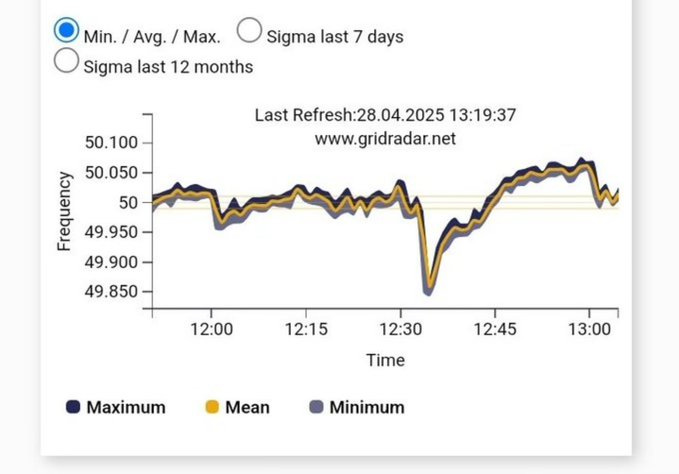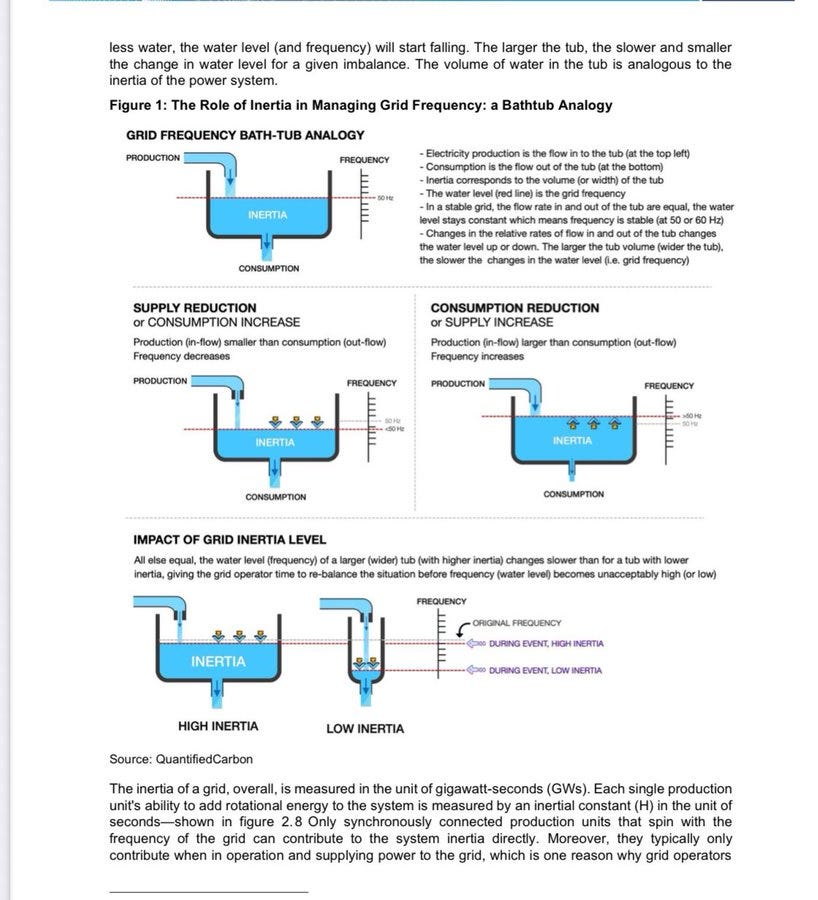Massive Blackout in Spain Blamed on Green Grid
Historic Blackout Exposes Fragility of Spain’s Renewable-Heavy Power Grid

Failure of Grid Inertia Triggers Largest Iberian Blackout, Disrupting Millions Across Spain, Portugal, and Parts of France Amid “Rare Atmospheric Phenomenon”
A massive blackout hit Spain and parts of Europe earlier today, and it might take a week or longer before things return to “normal.”
The blackout, which sounds like the plot of a 1970s disaster movie, occurred just six days after Spain celebrated its first weekday powered entirely by renewable energy, The nation’s largest-ever blackout plunged much of Spain and Portugal—and even parts of France—into darkness. The outage struck suddenly at 12:35 pm local time, triggering immediate chaos: airports and railways ground to a halt, digital payments stopped, and internet traffic plummeted by over a third in affected regions.
Early reports from Portugal’s grid operator, REN, attributed the blackout to “rare atmospheric phenomena,” specifically extreme temperature variations that caused “anomalous oscillations” in high-voltage lines. These oscillations led to synchronization failures across the European power network, causing cascading disturbances that quickly overwhelmed the system. Spanish grid operator Red Electrica confirmed the blackout but initially withheld details about the cause as investigations continued.
Technical experts and energy commentators pointed to deeper underlying issues. From Mark Nelson:
GRID INERTIA & SPANISH BLACKOUT: An analogy in an article from @ENEC_UAE CEO Mohammad al-Hammadi contains this useful metaphor, from @QvistStaffan's team at Quantified Carbon. Small or medium-sized disturbances on the grid become very difficult to manage and can cascade into wider instability and outages when the grid is in a low inertia condition, as was the case Monday in Spain just before the massive ongoing blackout, as seen in this snapshot captured by @JavierBlas.
As Spain aggressively closed coal and nuclear plants—replacing them with lightweight solar and wind installations—the grid lost vital inertia traditionally provided by heavy, spinning generators. This made the system increasingly sensitive to disruptions. Here’s how it works:
Power grids need stability:
Electricity isn’t just about making power—it’s also about keeping everything running smoothly together. When big machines like old-fashioned power plants (coal, gas, nuclear) are connected to the grid, their spinning parts act like flywheels. This “spin” is called inertia.
What inertia does:
If something goes wrong—a line trips or demand suddenly changes—the spinning mass of these machines helps keep the grid steady for a few seconds. It gives grid operators time to react before things get worse.
Low inertia = less stability:
If you have fewer big spinning machines (for example, you’re using a lot of solar and wind, which don’t spin in the same way), the grid has low inertia. That means there’s less “cushion” if something goes wrong.
What happened in Spain/Portugal:
There were unusual weather conditions that made the grid unstable. Because the grid had low inertia at that moment, these small problems quickly got out of hand, causing a big blackout. If there had been more inertia, the grid might have absorbed the shock and stayed up.
The metaphor:
Think of inertia like the shock absorbers in a car. If your car hits a bump and you have good shock absorbers, everything stays smooth. If you don’t, the car shakes and might even break down.
TDLR:
Low inertia from renewable energy means the grid is more fragile and small problems can more easily turn into big blackouts.
Despite years of warnings from engineers about the risks of low-inertia grids, policymakers focused on expanding renewables rather than investing in necessary grid stability measures such as synthetic inertia or maintaining nuclear capacity.
By spring 2025, Spain’s solar output regularly exceeded afternoon demand, sometimes driving electricity prices below zero. The system was operating on a knife-edge, and Monday’s blackout marked the breaking point. Over 10 GW of electricity demand vanished within seconds, leaving major cities like Madrid and Barcelona without power.
The blackout’s impact was swift and severe: air travel was delayed or halted, payment systems failed without cash or internet access, and daily life for millions was disrupted.
The event has raised urgent questions about the stability of modern, renewable-centric power grids. Experts warn that without immediate investment in stabilizing technologies and a reevaluation of current energy strategies, Spain and other nations could face even greater risks of widespread blackouts in the future.






Ireland is replacing the generator sets in a disused coal-fired power station with a giant flywheel to provide spinning reserve inertia to maintain grid stability in sudden load-generation mismatch situations, giving vital seconds to bring more generation capacity on stream. Replacing coal/gas turbines with renewables reduces the inertia of the system, making it less stable. Replacing that inertia at disused coal-fired stations is a logical solution, as high capacity grid connections are already there at no extra cost. If grid instability through lack of inertia was indeed the problem with this blackout, no doubt other national grid operators will take note and follow the Irish example.
https://www.powerengineeringint.com/decentralized-energy/equipment-technology/irish-flywheel-storage-project-could-prove-crucial-tech-for-eu-green-ambitions/